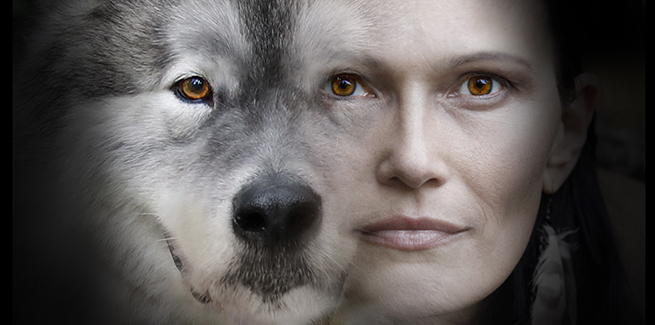Man’s best friend might be a dog, but a dog’s best friend might be a woman

Anthropologists at Washington State University (WSU) found that dogs’ relationships with women might have had a greater impact on the development of the dog-human bond than their relationships with men. Despite all that stuff you hear about man’s best friend.
That’s one of the findings of a new cross-cultural analysis led by WSU anthropology professor Robert Quinlan, PhD, and it’s one of three factors (among ecological constraints and hunting/agriculture systems) that may have played a bigger role than previously suspected.
The WSU team compared Human Relations Area Files data from ethnographers on 144 traditional, subsistence-level societies around the globe.
They found that, across cultures, humans were more likely to regard dogs as people—granting them “personhood,” as they put it—if the dogs had a special relationship with women. “What we call ‘personhood’ includes things like naming dogs, treating them like kin, believing dogs have souls, and, in many cultures, explicitly believing that dogs are people or are like people,” Quinlan, told NEWStat.
Quinlan added that there are many reasons for the special relationship between women and dogs: “In traditional cultures, women usually do a lot more food preparation than men, so they feed dogs regularly. Women also tend to [manage] more childcare, and kids and dogs seem to have a natural attraction to each other. So, dogs are on the scene around women a lot.”
He also noted that dogs and humans bond with each other much like parents bond with their children, and a child’s first bond is with their mother: “Dog-women relationships probably track that kind of attachment behavior.”
Climate and hunting
Quinlan said humans evolved in tropical environments and are pretty good at keeping cool, even with high activity levels over extended periods, whereas dogs’ ancestors evolved in cold environments in northern latitudes.
“Dogs burn a lot of energy quickly when they’re very active, [such as when they’re] chasing prey, and that can make keeping cool a big problem,” he said. “In hot environments, dogs can overheat really quickly, making them less useful as hunting partners [and] herders.”
Nevertheless, Quinlan said hunting was likely important in developing dog-human bonds. “We found that, in populations primarily engaged in hunting for [survival], dogs and humans were much more useful to each other than among farmers or herding groups.” He said that’s because dogs improve hunting success when the hunters use traditional tools, such as bows and arrows.
Quinlan said that women played a big part in what he called opportunistic hunting, such as “when a dog tags along with [a] woman to tend to an agricultural plot; they might encounter game by chance, and the woman and dog can bag that game to add to their diet.” He said that recent research with Tsimane forager-horticulturalists in lowland Bolivia shows that 76% of women’s hunting was with dogs, compared with only 24% of men’s hunting.
Whatever the reasons for the special dog-woman bond, said Quinlan, “Humans owe a big debt to dogs, and women have been making good on that debt for a long time, and in many different places.”
Photo credit: © alkir/iStock/Getty Images Plus via Getty Images



